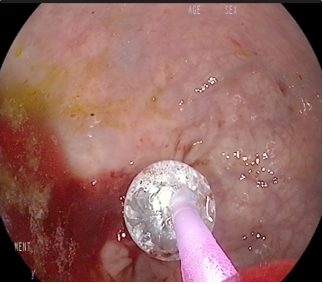Background/Aims: The anastomotic strictures are one of the most common colorectal surgery complications, and various endoscopic techniques have been defined. Balloon dilation is the most well-known and the simplest procedure. In this article, we aimed to present our series of endoscopic interventions and electroincision management for anastomotic strictures.
Materials and Methods: The files of 59 patients, who underwent colorectal surgery between January 2010 and September 2017 in our hospital and were diagnosed during the follow-up with anastomotic stricture, were analyzed. The outcomes of endoscopic interventions such as balloon dilation and electroincision were compared and reported.
Results: The mean age of the 59 patients included in the study was 59.5±16.26 years. The primary operative indications were colorectal cancer in 46, inflammatory bowel disease in 7, diverticulum in 5, and penetrating trauma in one patient. Single- or multiple-balloon dilations were successful in 48 patients. Electroincision was performed in 11 patients because of the balloon dilation failure. None of the patients needed a secondary surgery. During the mean 33.75 months of the follow-up, the stricture recurred in seven patients who had undergone balloon dilation. Repeated balloon dilation was successful in these patients without any need for an additional surgical intervention.
Conclusion: Balloon dilation can be performed safely as the primary treatment option, because of its easy access and noninvasive application. Electroincision is also a safe and effective endoscopic technique that can be preferred especially when the balloon dilation fails.
Cite this article as: Acar T, Aslan F, Acar N, Kamer E, Ünsal B, Hacıyanlı M. Role of endoscopic interventions and electroincision in benign anastomotic strictures following colorectal surgery. Turk J Gastroenterol 2019; 30(8): 673-9.




.png)
.png)
